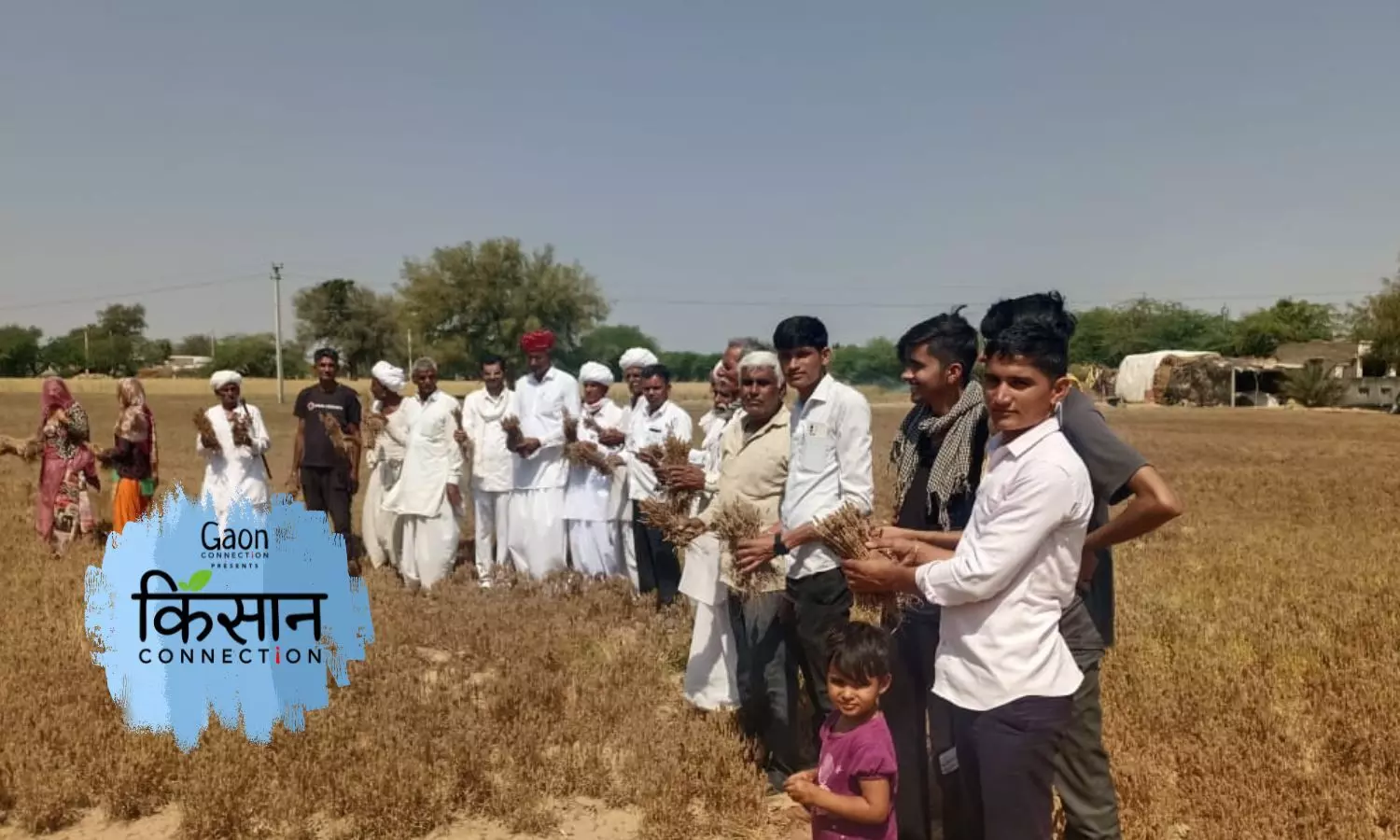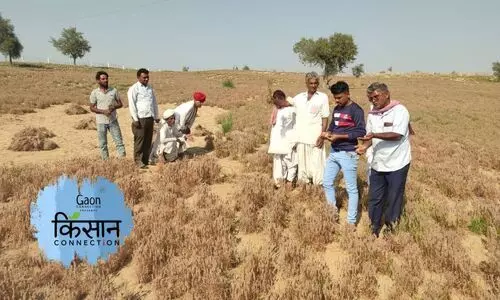Jaipur, Rajasthan
For many cumin farmers of Rajasthan, the kind of beating their crop has taken this season, is first in living memory. Nearly 50 per cent of the cumin crop has been laid to waste. Cold waves, heatwaves, and rainstorms and hail in the space of a few weeks have played havoc with the spice cultivation in the state, which is the second highest cumin producing state in the country.
The crop that is sown in October takes about 150 days to be ready-to-harvest, in March. However, since early this year, cumin cultivation, that is particularly suited to the dry environs of the desert state, faced an onslaught of weather episodes.
In January, it was an extreme cold wave that hit the mustard crop and farmers suffered losses. The next month, in February, arrival of early heatwaves and sudden temperature rise further hit the crop. The final nail in the coffin was the recent rain and hailstorm that has wiped off a large chunk of the crop.
“Cumin is sowed at the end of October or start of November. But, from the end of December right up to about January 20, there was a severe cold wave. Then in February there was an unprecedented rise in temperatures and the following month in March we had rainfall and hail-storms,” Hastimal Rajpurohit, a farmer from Barmer, told Gaon Connection.

Farmers said their only hope rested with the government.
“Rain, hailstorms, and the dips and rise in temperatures have not allowed the cumin to grow to its full potential. The seed was not allowed to develop properly and hence the quality of cumin is poor. We will not get a good rate for it this time,” Ratan Singh, a farmer from Kaniwara village in Jalore, told Gaon Connection.
Also Read: Cold wave in Rajasthan: 40% mustard crop lost to ground frost, complain farmers
Cumin is produced prominently in Barmer, Jaisalmer, Pali and Jalore districts in Rajasthan. It is a drought tolerant crop that requires less water and takes only about 150 days to be ready to harvest. It has been a very profitable crop for the Rajasthan farmers. According to Prahlad Siyol, spokesperson of Bhartiya Kisan Sangh, Jodhpur, there are about 400,000 jeera farmers in the state.
The contribution of cumin farmers of Rajasthan is immense. India is estimated to produce more than 70 per cent of the world’s cumin. Within the country, Gujarat and Rajasthan are the two top cumin seed-producing states with 90 per cent national production share.
In 2021-22, approximately 1,036,713 hectares of land in the country was under cumin cultivation, which yielded 725,651 tonnes cumin seed. The same year, Rajasthan produced 303,504 tonnes of cumin.
A disaster, say farmers
But things do not look good this year, say farmers. It was the first time in his life he had seen such erratic weather patterns, said 37-year-old Bhagirath Singh from Askandra village in Jaisalmer.
“I have never seen anything like this before. Many farmers grow cumin in my village as it is profitable, but there are going to be big losses this time and survival is going to be difficult,” Bhagirath Singh worried. “The production is low and we will not get good rates in the market. How are we to pay our electricity bills or bank loans,” he asked.
“Even last year we harvested two to three quintals of jeera per bigha of land, but this year if we are lucky, we may be able to salvage about a little more than a quintal a bigha,” Mahendra Kumar from Bhala village in Mohangarh tehsil, Jaisalmer, told Gaon Connection.
“We have had a cold wave, a heat wave and hailstones and rainfall, close on each other’s heels and that has played havoc with the crop,” he added. A good fifty per cent of the crop is destroyed in his village, the 40-year-old farmer said.
Kishan Jat, a farmer from Gudamalani village in Barmer, said nearly 60 per cent of the cumin crops were destroyed in and around his village. “Those who had harvested it early managed to save something, but others are looking at a major loss,” the 25-year-old told Gaon Connection.
Multiple crop losses
Apart from cumin, isabgol and castor seeds have also taken a hit in Rajasthan. “In our area more than 70 per cent of the Isabgol crop has been destroyed. We met the collector asking for some resolution to our problems. He has assured us but we need help as soon as possible. We pay around Rs 600 as crop insurance premium but don’t get adequate returns,” Ratan Singh from Jalore told Gaon Connection.
“I have not seen such destruction happening in the area. In the blink of an eye our crops were destroyed. We had sown cumin, isabgol, barley and wheat. Crops were ready to be harvested but as it was Holi and labourers were not available, we thought we would wait to harvest the crop. Now, we may have to use the labourers to just clean up our field,” Prahlad Siyol, spokesperson of Bhartiya Kisan Sangh, Jodhpur, told Gaon Connection.
Seeking compensation from the government
Farmers said their only hope rested with the government. On March 9, in Gudamalani village in Barmer, hundreds of farmers staged a protest demanding financial assistance from the government.
“We have sent letters to the area MLA and MP to take up our issue with the state and central governments. Thousands of farmers are affected by the untimely weather episodes,” Hastimal Rajpurohit, a farmer from Barmer, told Gaon Connection.
“We are currently trying to get an estimate of the losses caused to farmers. There are areas where cumin crop is affected but in other areas losses are not so much,” Padam Singh, joint director at the Rajasthan State Agriculture Department, Barmer, told Gaon Connection. “We are compiling a report and it will be published in a few days. Measures will be taken on the basis of that report,” he added.



















